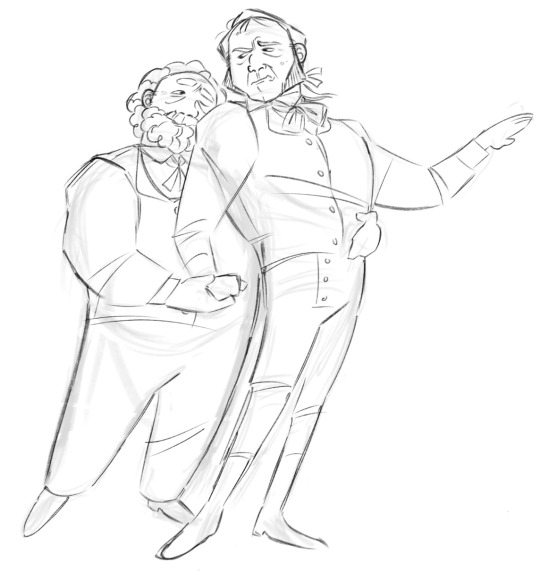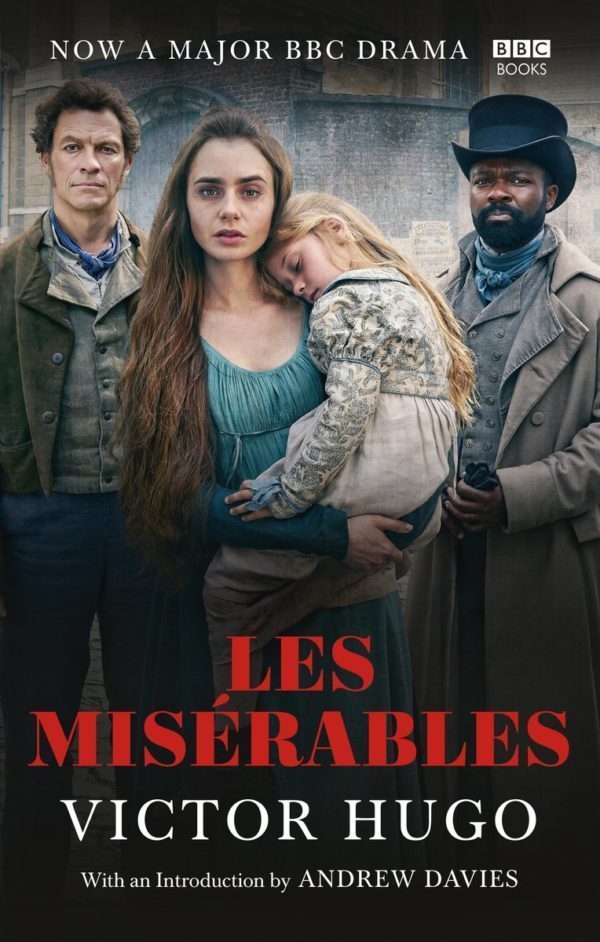#also very proud of valjean’s expression…so full of love
Text

Fellas <3
#been wanting to draw them dancing for a while so I’m happy#also very proud of valjean’s expression…so full of love#les miserables#valvert
244 notes
·
View notes
Text
Andrew Davies’s Introduction to the new BBC tie-in edition of Les Misérables

Les Misérables is a great baggy monster of a book. War, poverty, crime, justice, injustice, punishment, love, hatred, redemption, revolution: It seems that Hugo wants to encompass the whole world and everything in it, in a single novel.
At first it seems as if Hugo is telling a number of unrelated stories. He recounts the modest and virtuous life of a Bishop in the town of Digne in the south of France. The Bishop is visited by a newly released convict by the name of Jean Valjean, who steals the Bishop’s silver candlesticks but is forgiven and given the chance of a new life.
Then we are introduced to Fantine, a 17-year-old seamstress in Paris, the youngest and prettiest of her little gang. The girls pair up with a group of wealthy students, who show them a good time but then leave for their country estates, and Fantine is left with a baby and no means of support.
We encounter Thenardier, a human scavenger, robbing corpses in the aftermath of the battle of Waterloo, and amassing enough loot to set himself up as an innkeeper.
Meanwhile, in a grand house in Paris, a little boy called Marius is brought up by his autocratic Royalist grandfather, while his despised father, a hero of Waterloo, can only occasionally glimpse him in church.
All these people seem to inhabit different worlds, but they will be shown to be inextricably bound up in each other's fates. Fantine’s daughter Cosette is enslaved and abused by the Thenardier family, rescued by the ex-convict Valjean, and eventually encounters and falls in love with Marius (who is also loved by Thenardier’s daughter Eponine) and who turns away from his grandfather’s Royalist beliefs to join the abortive insurrection of 1832.
At the heart of the story is Jean Valjean, who has spent more than half his adult life in the prison hulks at Toulon for the crime of stealing a loaf of bread. He has been brutalised by this experience, and is now an avowed enemy of society, but he remains troubled by guilt and remorse. His nemesis is Javert, whom we first encounter as a prison guard, then as a chief of police. Javert is obsessed with Valjean, eventually to the point of madness, because Valjean confounds his rigid beliefs about personality and predestination. The conflict between Javert and Valjean takes on a mythic, almost Biblical grandeur. It is a debate about the very nature of humanity.
When I start thinking about an adaptation, I always ask myself: Why this? Why now? At one level, the question is easy to answer: Like War and Peace, Les Misérables poses the big questions: How should we live? How does love grow? What do we owe our parents, and vice versa? How do we endure suffering? How do we forgive others? How do we forgive ourselves? In this way, Hugo’s novel will always be relevant. But it speaks directly to our times too: great cities like London and Paris present glaring dichotomies of wealth and squalor that are difficult to ignore: Les Misérables forces us to look closely and identify with the wretched and forsaken of this world.
And of course, the long-running musical adaptation proves that Hugo’s novel still speaks to a contemporary audience. And these days most people will know of Les Misérables through the musical. I wanted to introduce the television audience to the full complexity of the novel, from the battlefield of Waterloo to the cloacal horror of the Paris sewers, and the final reconciliation and resolution, which I placed in the Bishop’s garden in Digne. And I hope that lovers of the musical will find their appreciation of the story enriched by this fuller version. In particular, we get to know and love Fantine as a carefree affectionate young girl, before all her trials and troubles begin. And as a father of a daughter, I was particularly engaged by Jean Valjean's relationship with little Cosette, who has been so abused by the Thenardiers. Jean Valjean and Cosette learn to love each other so purely and intensely: and then Valjean has to learn to let her spread her wings: a particularly intense expression of a universal experience.
We also see Marius grow from a charming toddler into a cocky and snobbish little boy, and then into a troubled young man. We see Gavroche as a neglected baby, Eponine and Azelma first as spoilt little girls, then as exploited teens. And we get to understand what monsters M. and Mme Thenardier really are.
Hugo includes a great many coincidences and not a few improbabilities in his story. Perhaps the hardest to swallow is that Hugo seems to expect us to believe that Javert turns up at Montreuil-sur-Mer by coincidence, and then he and Valjean fail to recognise each other. Every problem is an opportunity in disguise, and the story becomes a much richer one if we have Javert coming to the town by design, and playing a cat-and-mouse game with Valjean, both men having recognised each other instantly without acknowledging it. And in production, David Oyelowo and Dominic West were able to extract all the dramatic juice from this situation, in two extraordinarily powerful and subtle performances.
As always, it hasn’t been possible to include everything in the adaptation. Readers of this edition who have watched the show first will find so much more to enjoy. I feel very proud that my adaptation will have led many new readers to this magnificent, extraordinary masterpiece.
[x]
#les mis bbc#andrew davies#bbc les mis#les mis#les miserables#les miserables spoilers#spoilers#i'm too tired to even comment on this
62 notes
·
View notes